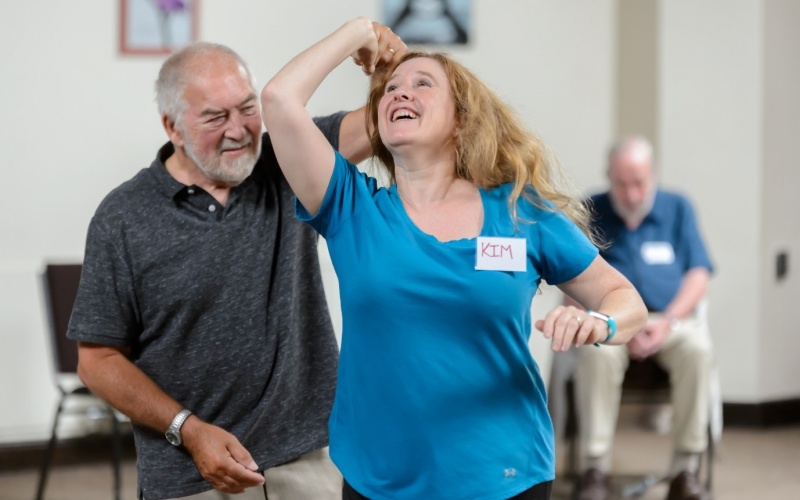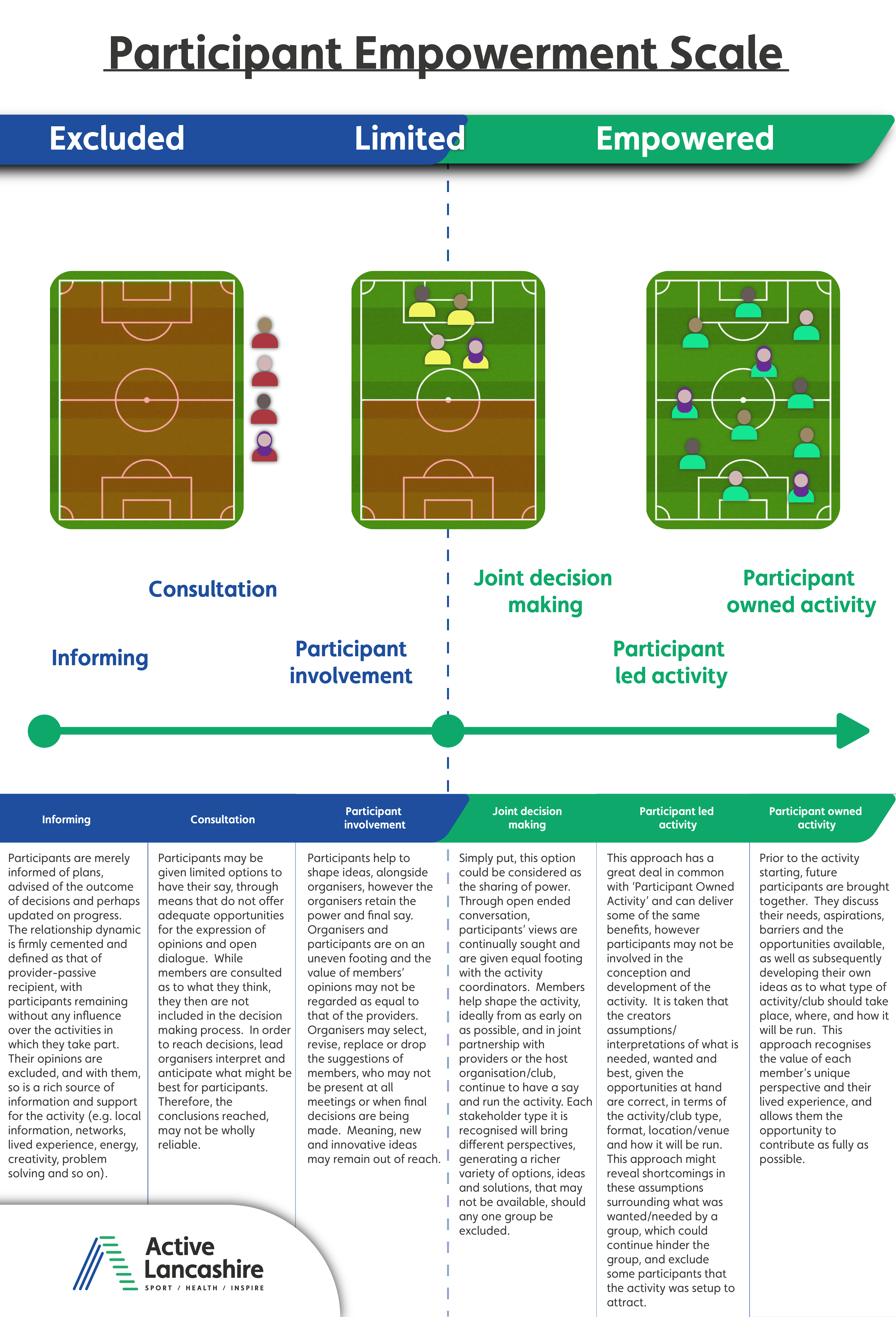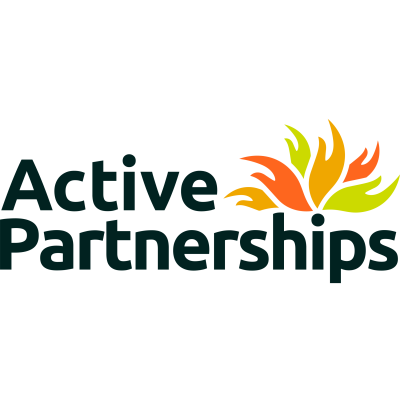
What is Social Prescribing
Social prescribing looks at the whole individual, considering many different contributors to their health, such as social connectedness, money/finance, mental wellbeing and increasingly, physical activity. Social prescribers then (or Link Workers), can serve as a really useful means of identifying and engaging inactive individuals, as well as a source of attendees for your sessions.
However, while those running activities that promote movement will help to improve attendees health in one respect, Link Workers can connect the same participants with additional services that can improve their wellbeing in other ways. Therefore, there are huge benefits for Link Workers and physical activity providers working together, as they can more fully meet the needs of their attendees and support one another in the pursuit of their goals (e.g. lifestyle change, health promotion and improved fitness levels).
View the files on the right for some resources supporting the social prescribing work.
“Social prescribing, also sometimes known as community referral, is a means of enabling health professionals to refer people to a range of local, non-clinical services. Recognising that people’s health and wellbeing are determined mostly by a range of social, economic and environmental factors, social prescribing seeks to address people’s needs in a holistic way.”
“Schemes delivering social prescribing can involve a range of activities that are typically provided by voluntary and community sector organisations. Examples include volunteering, arts activities, group learning, gardening, befriending, cookery, healthy eating advice and a range of sports. There are different models of social prescribing being employed across England. Most involve a link worker (other terms such as community connector, navigator and health adviser are also used) who works with people to access local sources of support.”
Source: King’s Fund: https://www.kingsfund.org.uk/publications/social-prescribing
It will not always be the case, but it is possible, that some people referred through social prescribing may need extra help to participate fully in your activities. This might simply be because they have never attended a physical activity before so it is new to them or the setting may also be unfamiliar.
Additionally, they are likely to be meeting the activity lead and other participants for the first time which in itself could be quite daunting for anyone. Someone referred through social prescribing may not only need some help to get active but they may experience anxiety, be socially isolated or have long-term health conditions. This might mean they have low levels of confidence when they try out new things, go to new places and meet strangers, or they could require additional practical support.
Therefore, it is worth thinking about how you welcome new attendees and might help them to feel more comfortable and included in your club, group or class. What measures could you put in place? Could you make additional information available to link workers, so that they can tell whether your sessions are well suited to their client's needs, before they attend? (e.g. what kind of welcome/support you provide).
Alternatively, could you ask new referrals for their ideas, listen and wherever possible, respond to what they say which might help them and future attendees feel more included?
Many people experience barriers when attempting to engage in physical activity. Sometimes it can be challenging as a physical activity provider to spot these barriers and attempt to address them. Being aware of the most common barriers will give you a good start to review your offer and evaluate if you have appropriate measures in place. By addressing the barriers your clients may face, you are increasing the chances of them engaging in your activity(ies). Some common barriers might be associated with:
- Age
- Gender
- Education/ awareness of benefits of physical activity
- Lack of disposable income to engage in physical activity
- Lack of accessibility for those with disabilities or long-term health conditions
- Religious backgrounds
- Ethnicity and lack of visible role models
By understanding what barriers your clients may face, you can begin to take action to reduce the impact these barriers can have. For example, if you find you are struggling to engage a female audience, consider the environment the activity in which the activity takes place. Is the venue clean/tidy? Alternatively, do advertisements and images firstly feature women, but also with a range of body types? Do you have female staff/volunteers with whom your female clients could relate or go to for support?
Another example is your clients lack of disposable income to engage in physical activity. Are you based in a deprived area? Do your clients come from disadvantaged background? Are you able to make the sessions free to attend or work with the local transport provider/ council to offer transport to your facility?
Related links:
- International Mixed Ability Sports - link promoting inclusivity and social integration in sport for those of different levels of fitness/ ability and from different backgrounds: Mixed Ability Manifesto – International Mixed Ability Sports
- Activity Alliance - link helping those with disabilities and long-term health conditions overcome barriers to becoming physically active: Talk to me principles in action: November 2014 | Research (activityalliance.org.uk)
- Women In Sport - link promoting physical activity and exercise amongst women: Our Publications - Women In Sport
- ‘We Are Undefeatable’ - link providing methods through which those with health conditions can become more active: Ways to Move - We Are Undefeatable
- ‘This Girl Can’ - link to sign-up to the Supporters Hub to access a range of materials, resources and tips on how to help get women and girls moving and feeling great: Become a supporter and inspire others - This Girl Can
It can be really useful to engage participants in open-ended conversations where you informally/formally collect their opinions, alongside questionnaires and other means. You could take this a step further and involve them in the decision making and the running of your club, group or session.
Allowing attendees and potential attendees to shape your activities in these ways, can give you valuable insight in to how people experience your activity and could help you: attract new members and underrepresented groups; ensure attendees remain safe; be certain participants are enjoying your sessions; encourage people to feel valued and part of your club/group/class; and keep attendees coming back for more!
We have produced a tool to help you consider, just how much say might be beneficial, for your participants have in how your activity is delivered. The Participant Empowerment Scale may help you choose the right level of participant ownership, to suit your activity and organisation.
The tool explains options that allow your participants a greater or lesser say, in shaping your activity offer. Some of the options enable physical activity providers, to put the wants and needs of a community, social group, service users or participants, at the very heart of what they do.
The model was in part inspired by Arnstein’s Ladder of Participation, which can be found online. How much is your activity, powered by its participants?





